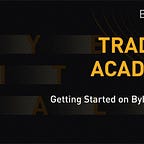Fees & Order types (Part 2)
In this Bybit talk we are going to discuss the fees paid on the platform and how to reduce them, All all the types of orders you can open on the exchange.
For starters, I would like to ask you some questions to see how well you understand the fee structure on Bybit.
Bybit charges a trading fee for every complete trade depending on the nature of the trade. For market “makers”, a 0.025% rebate will be provided while for market “takers”, a 0.075% fee will be charged.
The fee structure for leverage orders works like this, If I use all of my balance for the trade than the fee will be x the leverage used, If I opened a market order at x100 leverage with my entire balance I would pay x100 fee for the order, In this case 7.5% to open the order.
Market order
The market order will be executed at the best price available in the order book at the execution time. Traders do not need to set the price which allows the order to be immediately executed. Although market order guarantees the execution of the order, the execution price cannot be guaranteed because the market price may fluctuate rapidly. When traders need to enter or exit a volatile fast-moving price market, market orders are generally used.
Limit order
Limit Order allows traders to set the order price, and the order will be filled at the order price or an executed price better than the order price.
For Buy Limit Orders, the order price must be set at a price lower than the last traded price, or it would be filled immediately as a market order (a 0.075% trading taker fee will be charged.) The same applies to Sell Limit Orders, but the order price must be higher than the last traded price.
When submitting a limit order, if there are no orders in the order book that are better than or equal to the order price to be matched, the limit order will enter the order book to await execution which in turn will increase the depth of the market. Hence, as a market maker, the trader will receive a 0.025% Maker fee rebate.
In addition, limit orders can also be used to partially or fully close a position. The advantage of a limit order is that it can guarantee the transaction at the specified price, but it also faces the risk of the order failing to be executed.
Conditional Orders
They are advanced orders that submit automatically once specified criteria are met, namely a trigger price.
Once the preset trigger price meets the Last traded price, a conditional market order will be filled immediately, while a conditional limit order will be submitted to the order book and pending for execution. This limit order will, then, only be filled once the last traded price reaches the preset order price.
Let’s look at an example to see how conditional orders can be used to mimic common order types.
For Stop-Entry Orders
By using Stop-Entry Orders, traders are able to trade a breakout on the market. On Bybit, traders can use a Conditional Market or Conditional Limit Order to set up a Stop Entry Order. For buy Stop Orders, the trigger price must be higher than the last traded price, while for sell stop orders, the trigger price must be lower than the last traded price.
For Stop Loss Orders
A Stop Loss order is an instruction to close your position to limit the loss. It is exactly the same as a Stop-Entry Order but is used as an exit option by traders. By using a conditional order, we can customize the stop loss order as a stop loss market order or stop-limit order and have the flexibility to partially close a position.
For Take Profit Orders
A Take Profit Order is an order that closes a position once it reaches a certain level of profit. As mentioned earlier, it can be achieved through Limit Orders. But how to take profit by partially closing an existing position with a market order? To do this, use a Conditional Market Order with a trigger price set to be better than the current last traded price along with the desired quantity of contracts. Take Profit Orders are commonly used as an exit option, but can also be customized as an advanced entry order on Bybit’s platform.
When setting an order, a trader can choose different ‘Time in Force’ strategies to set the effective execution method of the order. Order execution strategies allow traders to have more control over their trading strategies.
Bybit offers three different ‘Time in Force’ order execution strategies for limit orders.
Good till cancelled (GTC): The order will remain valid until it is fully executed or manually cancelled by the trader. GTC is suitable for traders who are willing to wait for all contracts to be completed at a specified price and can flexibly cancel unconcluded contracts at any time.
Fill or Kill (FOK): The order must be immediately executed at the order price or better, otherwise, it will be completely cancelled and partially filled contracts will not be allowed. This execution strategy is more commonly used by scalping traders or day traders looking for short-term market opportunities.
Immediate or Cancel (IOC): The order must be filled immediately at the order limit price or better. If the order cannot be filled immediately, the unfilled contracts will be cancelled. IOC is usually used to avoid large orders being executed at a price that deviates from the ideal price. With this set, the contracts that fail to trade at the specified price will be cancelled.
